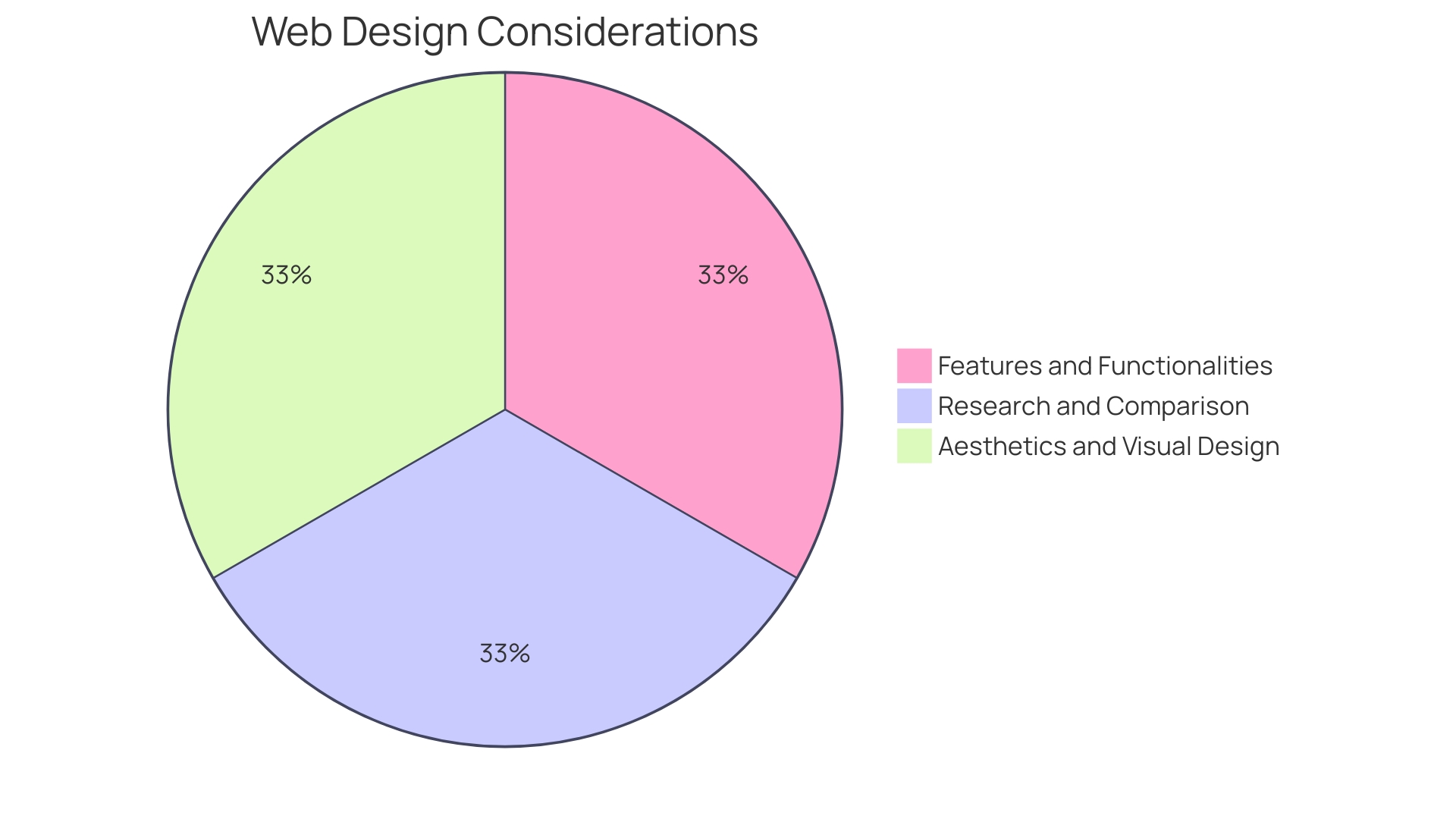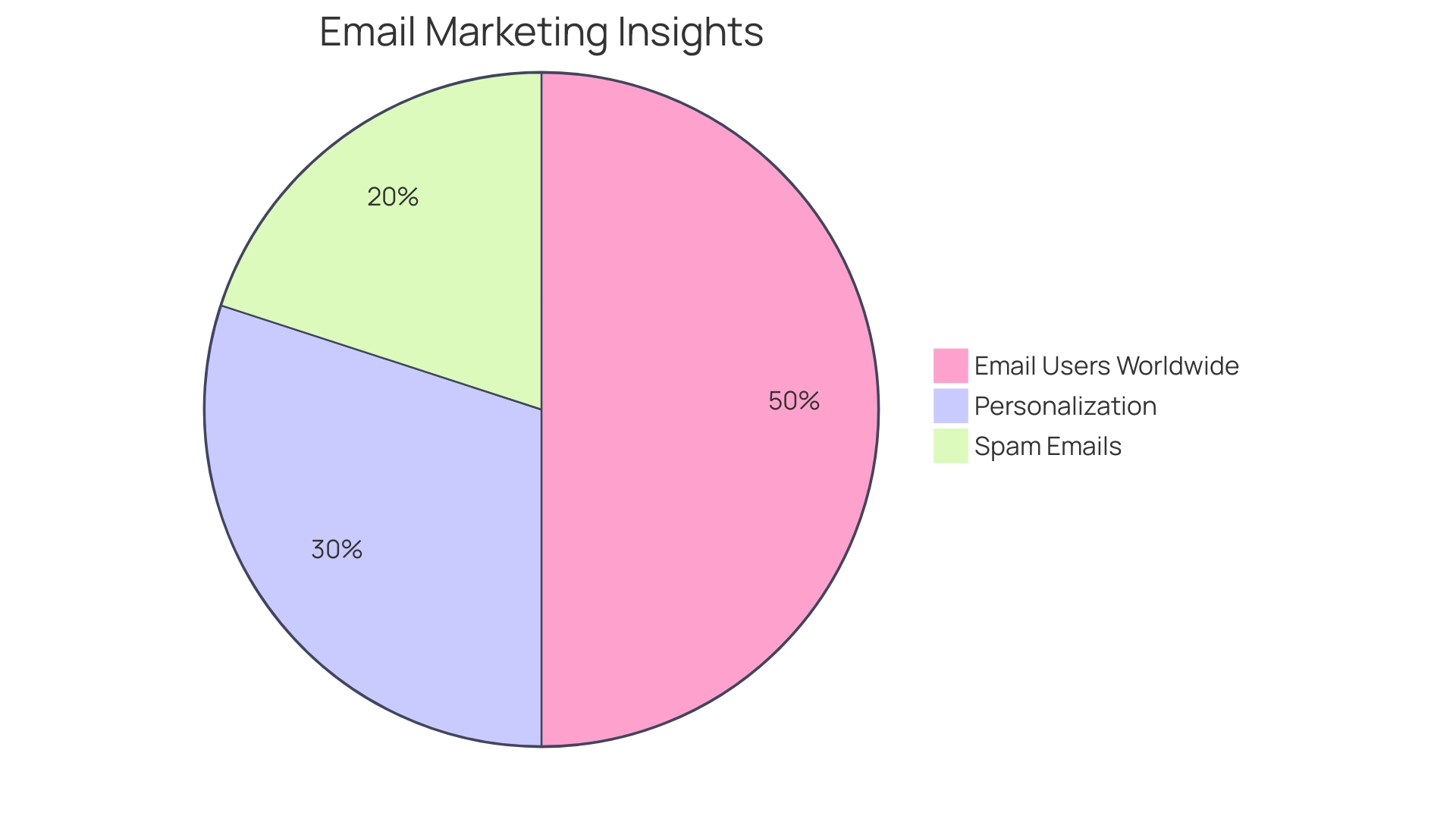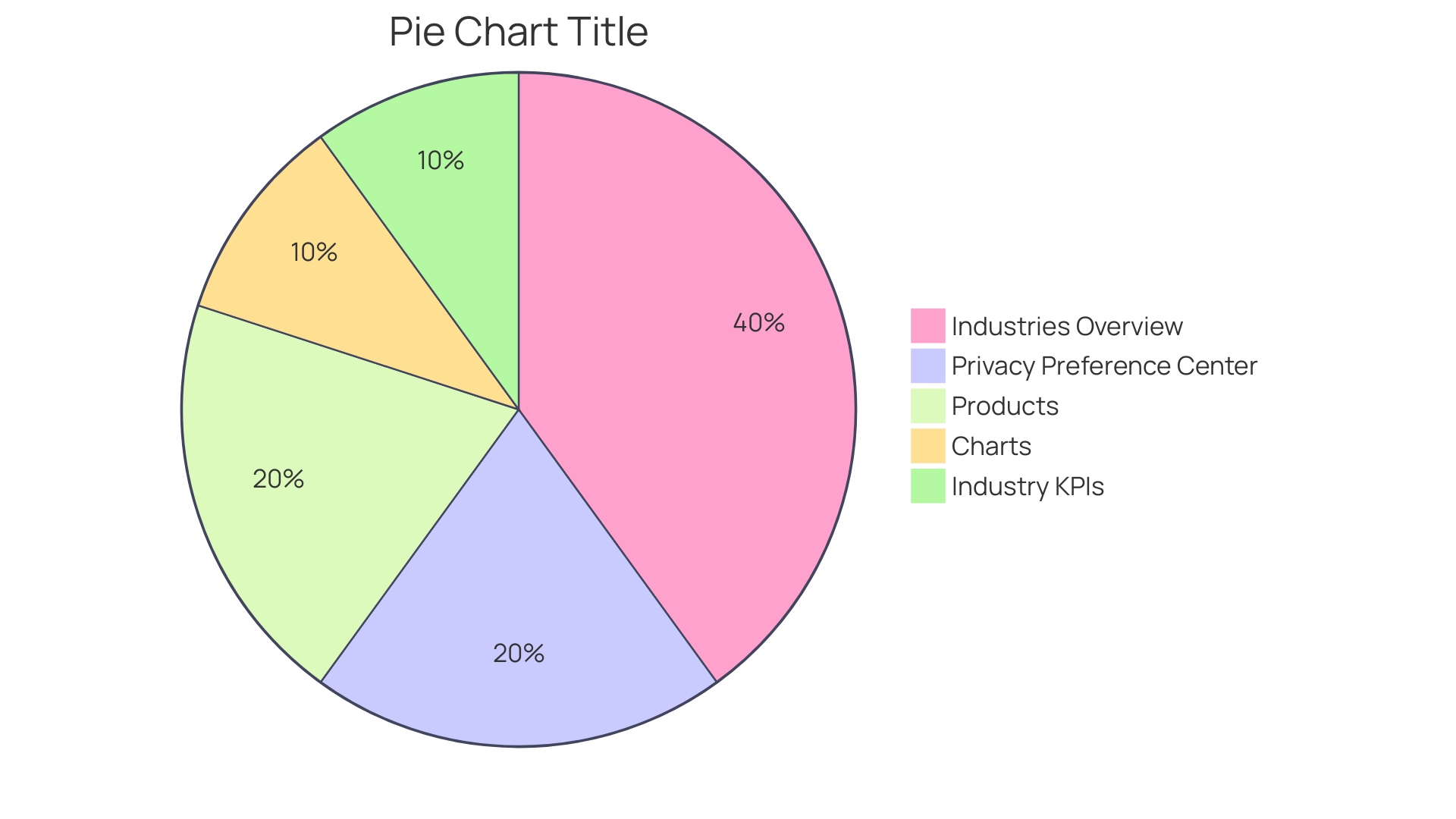Introduction
In today's competitive online marketplace, optimizing your retail website is vital for driving sales and enhancing customer satisfaction. From creating a seamless shopping experience to improving search engine visibility, there are various strategies that can elevate your website's performance. This article explores the importance of website optimization, user experience, website structure and navigation, search engine optimization (SEO), on-page SEO best practices, optimizing product pages, personalization techniques, email marketing, paid social media, page load speed, and analytics and A/B testing.
By implementing these expert-recommended strategies, you can position your retail website as a standout player in the digital landscape, attracting and retaining customers with a seamless and engaging shopping experience.
The Importance of a Well-Optimized Website
Optimizing your retail website goes beyond aesthetics; it's about creating a seamless and efficient shopping experience that can lead to a significant increase in sales and conversions. For instance, a hotel company aiming to boost bookings implemented foundational tools like Google Analytics and Conversion Tracking, resulting in more effective PPC campaigns. Meanwhile, Filson leveraged a custom forecasting model to predict e-commerce sales, achieving a remarkable forecast accuracy of 99.6% for one month.
Currys also saw substantial improvements by automating daily tasks, which allowed them to focus on engaging customers more effectively.
Recent innovations in retail, such as the launch of checkout-free stores using Zippin technology at Dublin Airport, showcase the industry's move towards frictionless and time-saving shopping experiences. This shift is supported by data suggesting that driving sales is now considered the most critical function of a store, as seen in a survey of over 200 retail executives.
Understanding and improving conversion rates is key to this optimization. The conversion rate, calculated by dividing the number of specific actions by the total number of site visits, provides insights into customer behavior. However, it's important to avoid common misconceptions, such as confusing 'sessions' with 'users.'
For accurate results, it's crucial to compare like with like, ensuring data from the same time periods and relevant pages are used.
As the digital landscape evolves, retailers must adapt to stay ahead. By focusing on providing informative content rather than just targeting keywords, businesses can meet customers at the start of their buying journey, when they're researching and comparing products online. This approach is essential for standing out in search engine results and drawing in potential buyers.

User Experience (UX) Optimization
Optimizing user experience (UX) is not just about creating a functional website; it's about weaving a brand experience through a sequence of touchpoints, from the moment a user lands on your site to the final interaction at checkout. Aesthetics play a pivotal role here since the visual appeal of a website can greatly influence customer perception and trust. To craft a delightful eCommerce experience, your site must be more than just easy to navigate; it must also be intuitive and visually engaging, reflecting the quality of your offerings.
A well-structured user journey is composed of interactions with various elements such as product listings, reviews, and the checkout process. Each of these interactions shapes the user's emotions, thoughts, and opinions. In fact, the User Experience Honeycomb, a concept created by a renowned designer and information architect in 2004, highlights seven key aspects of UX design, including the product's usefulness and relevance to the customer's needs.
High-quality product images and clear, concise product descriptions play a critical role in fulfilling these aspects. Moreover, ensuring that the site is responsive for mobile devices not only meets users' expectations but also caters to the growing trend of mobile shopping. By focusing on these details, you can elevate customer satisfaction, encourage engagement, and ultimately increase sales, as users are more likely to return to a website that offers a seamless and satisfying shopping experience.
Optimizing Website Structure and Navigation
A successful retail website must not only attract visitors but also lead them effortlessly through the journey from discovery to purchase. Effective organization and intuitive navigation are fundamental to this process. Crafting a clear pathway allows customers to explore various product categories, locate items with precision, and move to the checkout without friction.
This streamlined approach is not only user-centric but also augments your site's visibility to search engines, amplifying the likelihood of new customers finding you online.
Recent advancements in technology, such as the implementation of Django, Tailwind, and HTMX, have paved the way for creating seamless user experiences that cater to the modern shopper's needs. The modern consumer begins their shopping journey online, comparing products and seeking information that addresses their questions pre-purchase. Retailers must evolve beyond keyword-dense content to provide enriching, informative content that aligns with what consumers are searching for.
Furthermore, the introduction of checkout-free stores, like the pioneering Zippin-powered store at Dublin Airport, exemplifies the innovative direction in which retail is heading, emphasizing the importance of smooth user interactions. Retailers are also recognizing the significance of enhancing in-store technology, as seen in the increased deployment from 24% to 36%, with a focus on self-checkout solutions.
Incorporating these elements not only caters to the shoppers' expectations but also meets the critical benchmarks of mobile UX, a domain where over half of all web traffic now originates. With statistics indicating that mobile-friendly sites enjoy a 74% return rate and a 67% likelihood of a transaction, the message is clear: mobile optimization is not optional but a vital component of a successful retail website.
To achieve this, we must understand the User Experience Honeycomb, a framework that ensures digital products are useful, relevant, and continuously evolved to meet user needs. Retailers must create 'scenes' in their digital storefronts, akin to physical stores, where each page or section is a coherent part of the shopper's journey, encouraging exploration and engagement. This strategy, coupled with an easily accessible homepage and a thoughtfully structured website, sets the stage for an optimized user experience that not only meets but exceeds the expectations of today's discerning online shoppers.

Search Engine Optimization (SEO) Strategies
Optimizing your e-commerce website for search engines is more than just a technical task; it's about tailoring your online space to meet the needs and preferences of your customers. With Google dominating over 93% of the market share, adhering to its guidelines is crucial for offering a superior experience to your audience. Quality SEO leads to higher visibility, nurturing trust and authority as it guides customers through informed purchasing decisions.
Mastering the art of keyword research is key; it's not only about identifying high-volume search terms but also understanding the intent behind them. Keywords with a high purchase intent are invaluable as they align with the user's readiness to buy. By leveraging both free and premium keyword planning tools, you can pinpoint these terms and craft content that captures the essence of user queries.
Incorporating the latest trends, such as checkout-free stores, into your SEO strategy can further enhance user experience. For example, the innovative Zippin technology deployed at Dublin Airport's new store reflects the evolving retail landscape. By understanding and applying such advancements, you can better position your e-commerce platform to meet contemporary consumer expectations.
Statistics show that a focused SEO approach can result in increased traffic. With millions of domains vying for attention, the importance of a distinguishable online presence is clear. It's about crafting a digital experience that resonates with consumers at the very start of their shopping journey.
Retailers are advised to move beyond keyword-stuffed content and develop rich, informative content that preempts the customer's inquiries.
As the modern storefront, your website must capture and retain customer interest in a competitive digital marketplace. Collaborating with digital experts can enhance your website's functionality and design, ensuring a seamless experience that keeps users engaged. Such partnerships can expedite the journey towards a robust online presence, replete with the right tools and insights to reach your goals swiftly.
In essence, SEO is a dynamic and comprehensive process, blending technical optimization with an in-depth understanding of consumer behavior. It's a strategic endeavor to not just attract but to also retain customers by providing them an accessible and informative online experience.
On-Page SEO Best Practices
Optimizing a retail website's on-page SEO is a game of precision and strategic planning, akin to navigating a complex rail network like InterRail. Just as travelers must adapt to varied rules and languages across different European countries, e-commerce professionals must tailor their web pages for optimal search engine visibility. Meta tags, headings, URLs, and content require meticulous crafting to resonate with both search engines and users.
In the world of retail, where an estimated 24 million online stores are vying for attention, it becomes imperative to employ smart SEO strategies. Implementing long-tail keywords, akin to the approach of a travel blog targeting the niche 'Interrail routes Italy', can distinguish your website amid fierce competition. This focused strategy targets specific customer intents and yields more qualified traffic, potentially leading to higher sales.
Moreover, an engaging digital experience is paramount for retailers. With over 93% of online experiences beginning with search engines, on-page factors like loading speed and descriptive headings are critical. These elements contribute to a seamless user journey, starting from the initial online research to the final purchase.
Retailers must also prioritize informational content over keyword stuffing, answering consumers' pre-purchase queries and aligning with their search intents.
To further underscore the importance of SEO, consider that accessibility should be a guiding principle for your website. As the internet becomes the starting point for shoppers, a focus on SEO that includes providing accessible content could tap into the significant purchasing power of users with disabilities.
By emulating the strategic approach of a travel blogger utilizing long-tail keywords to outmaneuver competitors and focusing on a comprehensive SEO strategy that includes high-quality content and accessibility, retailers can enhance their website's search engine rankings, drive organic traffic, and ultimately, increase sales.
Optimizing Product Pages for Higher Conversions
The landscape of e-commerce is continuously evolving, and the success of a retail website hinges on the effectiveness of its product pages. Converting visitors into customers is not only about showcasing products but also about crafting an immersive experience that resonates with the audience. Whether it's a tangible item, a digital offering, or a bundle of services, the spotlight is always on the product.
A product page that is meticulously designed, with compelling copy and impactful visuals, can significantly boost conversion rates.
To captivate and engage customers, it's essential to blend the right elements on a product page. High-quality imagery brings products to life, enabling customers to visualize ownership, while clear, concise, and persuasive product descriptions help articulate the value and benefits of the product. A well-placed call-to-action (CTA) guides the customer smoothly through the purchase process, minimizing friction and amplifying the likelihood of a sale.
Indeed, with the right ingredients, a product page can transform from a mere digital listing into a powerful conversion tool.
Moreover, recent advancements in retail technology, such as the integration of checkout-free systems, are setting new benchmarks in user experience. For instance, a pioneering store in Dublin Airport has adopted Zippin technology to streamline the shopping process, underscoring the importance of a frictionless buyer journey.
Ensuring mobile responsiveness is another critical aspect. As the use of mobile devices for shopping continues to rise, it is imperative that product pages are optimized for smooth navigation and quick loading on all screen sizes. The ultimate aim is to provide a seamless shopping experience, whether the customer is on a desktop or on-the-go with a smartphone.
To sum up, product pages are the cornerstone of any retail website, and their optimization can lead to a substantial uptick in conversions. By focusing on creating a cohesive and user-centric product page, retailers can not only meet but exceed the expectations of today's discerning online shoppers.
Personalization Techniques to Enhance Customer Experience
Tailoring the digital shopping experience to each customer's unique preferences is more than just a trend; it's a proven strategy that can significantly boost sales and enhance the customer journey. Innovative online retailers are leveraging data to offer personalized product suggestions, dynamic pricing, and targeted email campaigns, leading to a more captivating and bespoke experience for every shopper.
For instance, personalization has transformed the hospitality industry, where the customization of services and offers is now expected by guests at every stage of their journey, not just upon arrival. By collecting and managing customer data effectively, businesses can create highly individualized experiences that resonate with their customers' lifestyles and preferences, akin to a hotel guest finding their preferred bottle of champagne waiting in their room.
Recent findings by Medallia, Inc. highlight the importance of personalization in customer satisfaction. Their research shows a direct correlation between the degree of personalization and customer satisfaction levels, with 61% of consumers willing to spend more for a customized experience. However, the study also revealed that only a quarter of consumers feel they receive a highly personalized experience, indicating a significant opportunity for retailers to improve their personalization strategies.
Amidst economic uncertainties, retailers are making strides in technology advancements in-store, with a focus on driving sales and improving customer experiences. The integration of self-checkout systems and artificial intelligence is helping retailers offer more personalized services and streamline operations.
The most successful marketers understand that personalization is both an art and a science. It's about creatively engaging customers with memorable experiences and empirically harnessing data insights to deliver the right message at the right time on the preferred channels. This dual approach is crucial for building strong, lasting customer relationships that contribute to sustainable business growth.
Email Marketing and Lead Generation Tactics
Harnessing the power of email marketing can substantially elevate your retail website's sales and lead generation. To tap into this potential, begin by curating an email list filled with prospects and existing customers who have shown interest in your offerings. The key to effective email marketing lies in the creation of personalized content that resonates with the recipient, smart segmentation of your list to cater to varying customer interests, and the strategic use of automation for sending well-timed, relevant messages.
Implementing these tactics not only strengthens customer relationships but also guides them back to your website, priming them for new product launches and exclusive promotions. A case in point is a hotel company that saw a significant increase in bookings after refining their email marketing strategy, which included the meticulous selection of keywords and the use of advanced tools like Google Analytics and Facebook Pixel.
Moreover, recent studies suggest that by 2025, revenue from email marketing is projected to hit $13.7 billion, underlining its potency as a sales channel. Yet, with consumers inundated with marketing emails, achieving standout performance requires surpassing the average conversion rate, which hovers below one percent.
To truly captivate your audience, start with a creative subject line that sparks curiosity or addresses a specific need, followed by an engaging opening line. Concisely present your value proposition and conclude with a compelling call to action that guides them towards the next step. Remember, the secret to improved sales is not just about amassing subscribers but nurturing them effectively through targeted campaigns, as underscored by a quote from industry sources which emphasizes the importance of email list segmentation in converting subscribers into customers.
Such strategic email marketing efforts can lead to heightened engagement, as experienced by a brand that reported increased engagement due to enhanced deliverability and fine-tuned practices, backed by expert advice and data analysis. This demonstrates the transformative impact of a well-executed email marketing strategy on customer engagement and conversion rates.

Paid Social Media and Retargeting Campaigns
Harnessing the power of paid social media advertising and retargeting campaigns can be transformative for e-commerce businesses looking to amplify their online sales. Platforms like Facebook, Instagram, and Twitter offer an unparalleled opportunity to target potential customers with precision, thus driving a substantial influx of traffic to retail websites. A pivotal component of this strategy is retargeting, which enables businesses to re-engage with individuals who have previously interacted with their site or shown interest in their offerings.
These personalized retargeting ads are not just about augmenting brand visibility; they're about creating a tailored experience that can lead to increased customer loyalty, repeat visits, and a higher conversion rate from browsing to purchasing.
A compelling case study from the hospitality industry illustrates this point. A hotel brand, seeking to increase bookings, pivoted from a lackluster Google Ads approach to a robust strategy incorporating Google Analytics, Conversion Tracking, and Facebook Pixel. This foundational work, coupled with an in-depth keyword investigation for PPC campaigns, positioned the hotel for a more successful digital advertising outcome.
Moreover, research reveals that retargeting is essential, as a mere 2% of web visitors convert on their first visit. Through a deep understanding of their existing customer base, businesses can tailor their retargeting efforts to resonate with the precise demographics, behaviors, and preferences of their audience. Utilizing tools such as Facebook's audience insights can greatly enhance the effectiveness of these campaigns.
The impact of social media on sales cannot be overstated. A report by Bain and Co. and Sequoia India indicates that 85% of transactions involving small retailers are influenced by social platforms. This trend is further bolstered by the projected rise to nearly six billion active social media users by 2027.
Retailers can leverage this growing audience by implementing retargeting strategies that align with the latest industry benchmarks and insights, as provided by leading-edge research entities like Insider Intelligence and eMarketer.
To conclude, retargeting is not a mere advertising tactic; it's a strategic approach to commerce that, when executed with an understanding of customer insights and the latest digital trends, can significantly boost online retail sales.

Importance of Page Load Speed and Performance
Elevating the performance of your retail website is more than a luxury; it's a necessity in today's competitive online marketplace. Customers expect instant access when they click on a page, and even a delay of one second can be costly. In fact, it's estimated that slow-loading websites could result in a staggering loss of up to £28.4 billion for businesses during peak shopping periods like Christmas, as reported by Retail Technology Review.
To prevent these losses and enhance user engagement, one must delve into the technicalities that underpin fast-loading pages. Image optimization is a start; crisp visuals are essential, but they need to be balanced with load times. Techniques like image compression, using appropriate file formats, and responsive images are indispensable.
It's not just about the visuals, though. The underlying code must be streamlined—minification of CSS, JavaScript, and HTML can significantly reduce load times.
Furthermore, leveraging browser caching saves repeat visitors from having to download the same assets every time, thus speeding up their experience. A Content Delivery Network (CDN) can also be instrumental in delivering content swiftly by reducing the physical distance between the server and the user.
Driving home the importance of these technical investments, studies show that website speed is a critical factor in SEO. Search engines like Google consider page load times when ranking sites, meaning a faster site is more likely to appear higher in search results, thus attracting more organic traffic.
By implementing these strategies, not only can you offer a seamless browsing experience that caters to the impatient online shopper, but you also set the stage for improved search rankings, higher conversions, and ultimately, significant growth in sales.
Analytics and A/B Testing for Continuous Improvement
Harnessing the power of analytics and A/B testing is a game-changer for optimizing your retail website's performance. The actionable insights derived from analyzing customer interactions and performance metrics are invaluable. They provide a window into understanding customer preferences and behaviors, allowing you to fine-tune your website to their needs.
By diving deep into data, you're equipped to make strategic enhancements to design, content, and calls-to-action, leading to an improved user experience that resonates with your audience.
A/B testing takes your optimization efforts to the next level. It's a methodical approach that pits different web page variants against each other to discover the most effective elements that encourage higher conversion rates. For instance, Elkjop, a leading omnichannel electronics retailer, leveraged A/B testing to enhance their online customer experience, aiming to mirror the trust and expert advice traditionally found in-store.
Their focus on creating a seamless omnichannel experience has been crucial to their success, showing that a well-executed A/B testing strategy can significantly impact sales and customer satisfaction.
Moreover, as the retail landscape evolves, companies like Spotify have demonstrated the importance of continually innovating the user experience. With their foray into video podcasts, they've seen engagement surge, illustrating the potential of adapting and testing new content formats to captivate audiences. This kind of innovation can be applied to retail websites, where multimedia content and interactive features may be tested to enhance user engagement.
Calculating conversion rates is a straightforward yet vital part of this process. By understanding the percentage of visitors who take the desired action, retailers can gauge the effectiveness of their website changes. It's essential, however, to ensure accuracy by isolating the data related to specific changes or pages, to not skew the results of conversion rate optimization efforts.
In essence, continuous analysis and testing are at the heart of a thriving retail website. Embracing these practices allows retailers to not only keep pace with customer expectations but also to anticipate and lead market trends, ensuring that the online shopping experience is as compelling and trustworthy as the in-store experience.
Conclusion
In conclusion, optimizing your retail website is crucial for driving sales and enhancing customer satisfaction. By implementing expert-recommended strategies, you can position your website as a standout player in the digital landscape.
Optimizing user experience (UX) through aesthetics, intuitive navigation, and responsive design is key to elevating customer satisfaction and increasing sales. Effective search engine optimization (SEO) improves visibility and drives organic traffic by understanding keyword research and aligning content with user intent. On-page SEO practices, such as optimizing meta tags, URLs, and content, improve search engine visibility and surpass competitors.
Optimizing product pages with compelling descriptions, high-quality imagery, and well-placed calls-to-action boosts conversion rates. Personalization techniques, such as personalized product suggestions and targeted email campaigns, enhance the customer experience and drive sales. Paid social media advertising and retargeting campaigns target potential customers and increase sales.
Optimizing page load speed with techniques like image optimization and code streamlining enhances user experience and improves search engine rankings. Analytics and A/B testing provide insights to continuously improve website performance, driving higher conversion rates.
In conclusion, implementing these strategies will optimize your retail website, positioning you as a leader in the digital landscape. Elevating user experience, effective SEO, optimized product pages, personalization, email marketing, page load speed, and analytics and A/B testing are crucial for driving sales and enhancing customer satisfaction. Stay ahead of the competition by continuously improving and adapting to meet evolving customer needs.





